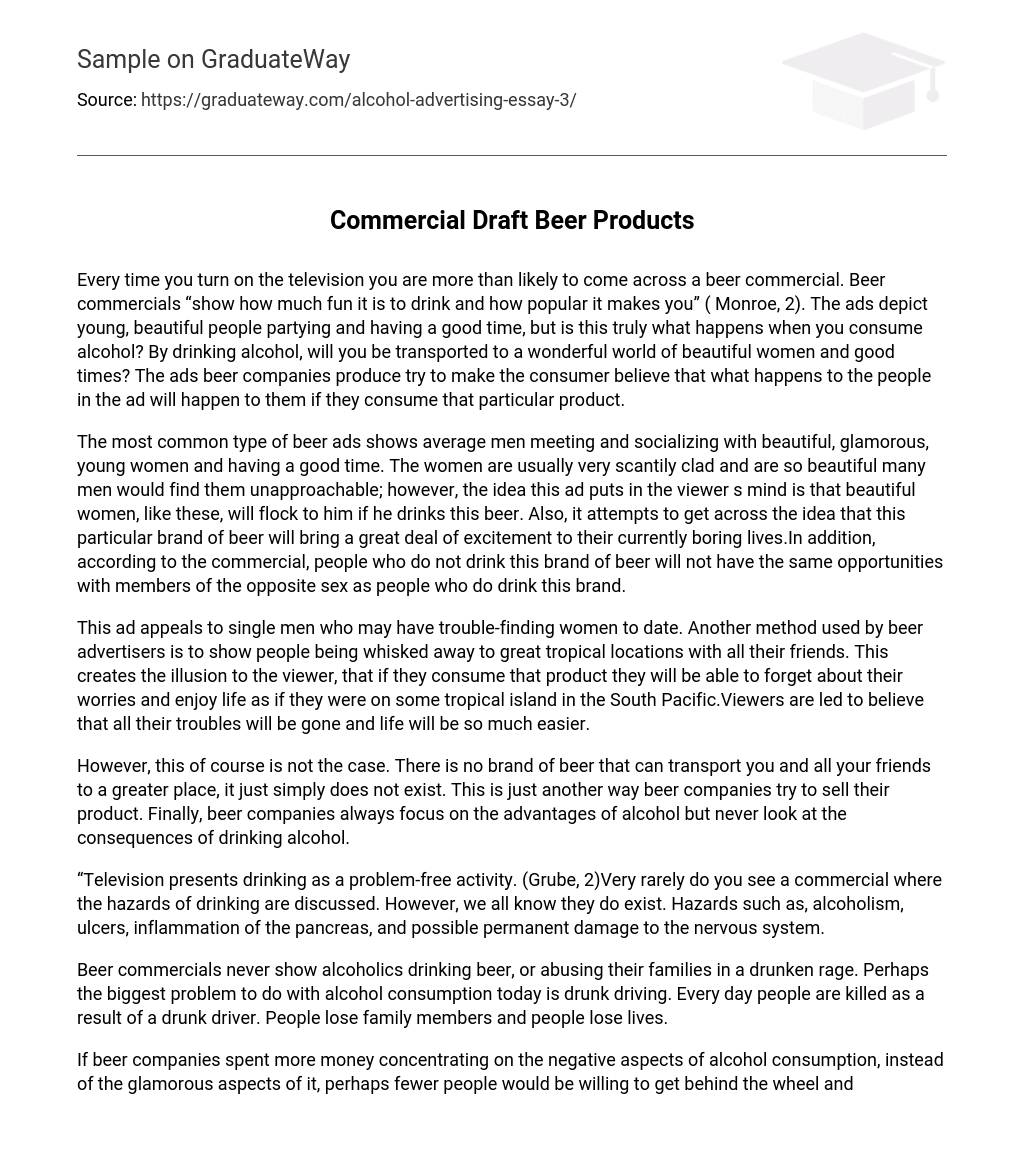Each time the television is switched on, there is a strong chance of coming across a beer commercial that seeks to showcase the enjoyment and social status linked with drinking beer (Monroe, 2). These commercials present vibrant and appealing individuals participating in parties and having a good time. However, does this accurately represent what occurs when alcohol is consumed? Does drinking alcohol automatically transport people to an extraordinary world filled with beautiful women and pleasurable moments? The objective behind beer companies’ advertisements is to convince consumers that consuming their product will lead to experiences similar to those depicted in the ads.
The most common type of beer ads depict regular men socializing with attractive women, dressed provocatively, implying that drinking this beer can attract beautiful women. The ad also suggests that consuming this beer will bring excitement to boring lives. Additionally, the commercial implies that those who don’t drink this brand will miss out on opportunities with the opposite sex.
This advertisement targets single men who struggle to find women to date. Beer advertisers also use the strategy of portraying people being transported to amazing tropical destinations with their friends. This creates the false impression that consuming the product will allow viewers to escape their worries and embrace a carefree life similar to being on a South Pacific island. The viewers are persuaded that all their troubles will vanish, making life significantly simpler.
Contrary to popular belief, no beer brand possesses the ability to immediately transport you and your friends to a more enjoyable place. This notion serves as a mere marketing strategy employed by beer companies to promote their product. Additionally, while beer companies highlight the benefits of alcohol, they frequently disregard the adverse consequences that accompany drinking.
Television often portrays drinking as a carefree pastime, disregarding the associated risks. However, we recognize that these hazards are genuine and encompass alcoholism, ulcers, pancreas inflammation, and potential lasting damage to the nervous system.
Beer advertisements do not depict individuals with alcohol addiction consuming beer or engaging in domestic violence while under the influence. Drunk driving is arguably the most significant issue related to alcohol consumption nowadays. Tragically, countless individuals lose their lives due to accidents caused by drivers who are intoxicated. This devastating reality results in the loss of loved ones and lives.
Might there be a decrease in drunk driving incidents if beer companies focused more on the negative consequences of alcohol consumption rather than promoting its glamorous aspects? Beer ads attempt to convince consumers that the experiences depicted in the advertisements will also be their own if they consume that specific product. Certain individuals certainly view this as deceptive advertising. Beer advertising is becoming increasingly innovative, yet simultaneously more unrealistic.





